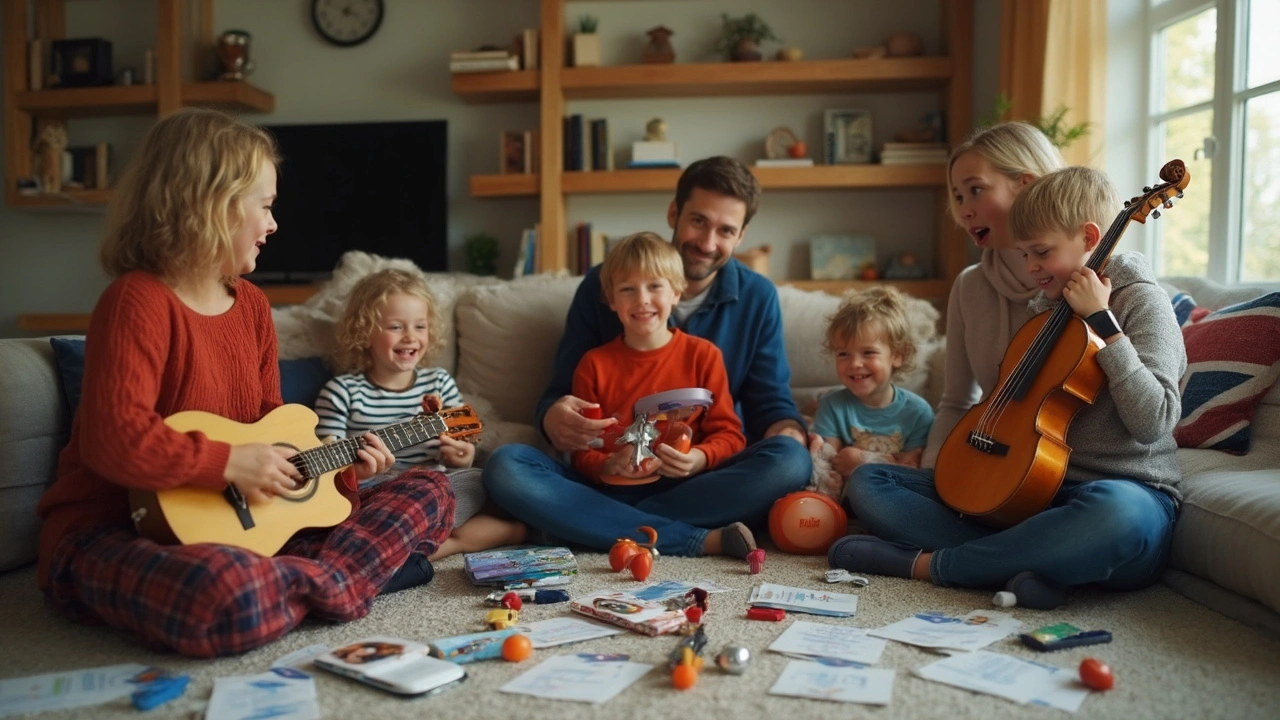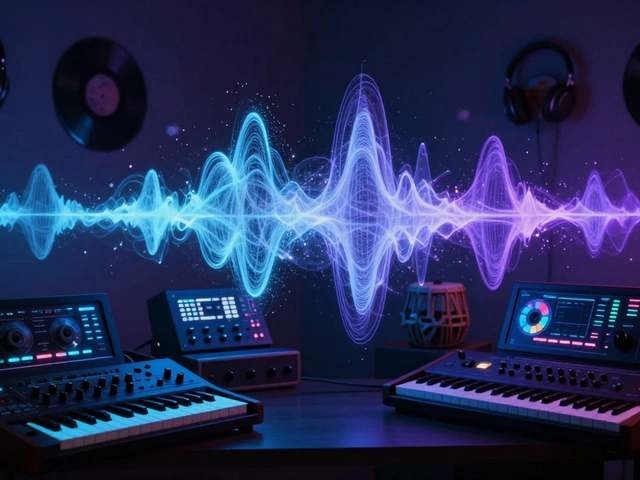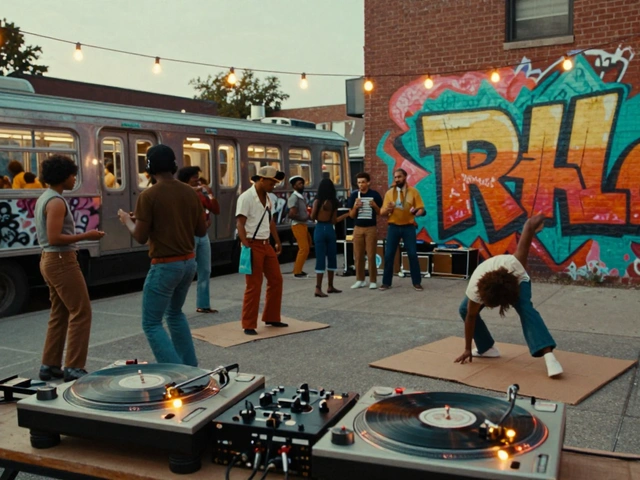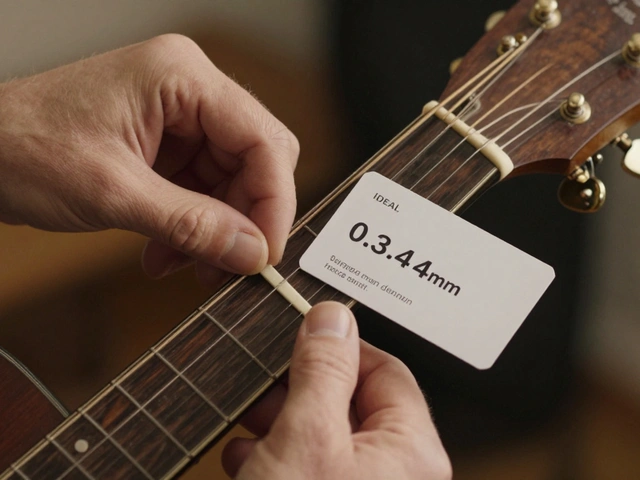Did you know that kids who play a musical instrument are 52% more likely to have stronger cognitive skills by age 10, according to a 2023 neurodevelopment study by the University of Toronto? That’s wild. It’s not just about building talent for recitals—music literally shapes how young minds work. But here’s the kicker: you can’t just toss any random instrument into their hands and hope for the best. Picking the right musical instrument can spark a life-long love for music—or snuff it out before the first note.
Why Choosing the Right Instrument Matters
When parents start looking for musical instruments for kids, it’s easy to get swept up in what looks cool or what sounds best to your ears. But here’s the thing: what your child can actually handle physically and emotionally at their age is way more important. Their little hands might not stretch around a full-size guitar or reach all the keys on a standard piano, and that's totally normal.
Take child-size violins, for example. These aren’t just mini versions—makers craft them with shorter necks and lighter bodies so tiny arms don’t get tired. For a kid under 6, getting them a 1/8 or 1/4 size means they can practice longer and enjoy playing, not struggle with a monster instrument. Guitars, too, come in 1/2 or 3/4 sizes for smaller players. And if you think keyboards are too advanced, think again: modern entry-level keyboards have color-coded keys, built-in lesson modes, and touch-sensitive action to mimic a real piano’s feel without being intimidating.
Percussion instruments like xylophones or cajóns can be fantastic first choices because they build rhythm, coordination, and confidence. One interesting fact: a 2021 survey by Yamaha showed 65% of kids under 8 who started with percussion moved on to learn melodic instruments by age 10, often feeling more comfortable because of their rhythm groundings.
And there’s the social factor. Kids who join school bands or local music groups are twice as likely to report happiness at school, as per the National Association for Music Education. Picking an instrument that fits common band or orchestral settings can open doors for teamwork and friendship—think clarinets, flutes, trumpets, or drums.
Bottom line: match the instrument to your child’s age, hand size, interests, and music goals. Let them try out options at a local music shop or during school open houses. See what makes their eyes light up. The right fit isn’t always obvious at first, but you’ll know when they’re suddenly eager to practice instead of making excuses.
Benefits of Music for Children
So what really happens when kids get into music? The science is stacked with clear wins. Learning music as a child actually changes the brain’s structure. MRI scans show that kids who practice music for just two years develop thicker corpus callosums—the part that helps their left and right brain talk to each other. That translates to better focus, improved math and language skills, and higher memory recall.
According to the Royal Conservatory of Music, young musicians show a 17% boost in reading comprehension compared to their non-musical peers. That’s not a fluke. Music exercises the ears, eyes, and hands all at once. When your kid is drumming, they’re building coordination. If they’re working through notes on a recorder, they’re sharpening memory and discipline. And get this: a 2022 Harvard study found that even casual music play (like banging on a drum set at home) can lower a child’s cortisol (stress hormone) levels by up to 25% over six months.
Let’s not overlook the confidence factor. Picking up an instrument is tough. There’s a learning curve—they fumble, squeak, miss notes, and maybe feel shy. But after a few weeks, something shifts. They conquer the basics, play a simple tune, and realize, "I did this." That self-assurance is gold, and it rubs off everywhere: on the playground, in class, and at home.
A quick tip: Let your child pick the instrument if possible. A 2020 Gallup Youth survey found that kids who choose their first instrument stick with music for an average of 2.7 years longer than those forced into it by someone else. Whenever you can, follow their curiosity.
Another cool fact: Music isn’t just for superstars. Even basic music lessons improve emotional intelligence and empathy. Team music activities—like duets, ensembles, or school bands—teach kids to listen, adapt, and cooperate, which is something everyone can use more of, right?
It can be tempting to go for high-tech gadgets, but traditional instruments—like xylophones, ukuleles, or even simple harmonicas—build solid musical foundations and hand-eye coordination. If you’re ever in doubt, remember what legendary cellist Yo-Yo Ma said:
“Passion is one great force that unleashes creativity, because if you're passionate about something, then you're more willing to take risks.”Give your child the chance to discover their passion and watch what happens next.

Top 10 Musical Instruments for Kids in 2025
Here’s where things get fun—and if you’re looking for stats or unique tips, I’ve got plenty. After chatting with educators, parents, and peeking at Amazon’s best-sellers for 2025, this top 10 list has proven to spark the most interest and offer lasting value for young beginners:
- Keyboard/Piano (ages 4+): Keyboards are a classic starter—they teach melody, coordination, and music theory. Look for weighted keys and built-in lesson modes. Casio and Yamaha dominate for a reason. Try the Yamaha P-45 if your budget allows—it even has a headphone jack for quiet practice. Did you know the piano is the best all-around instrument for kids, according to a 2024 parent survey by Music Teachers National Association?
- Ukulele (ages 3+): The ukulele is tiny and fairly simple, which makes it perfect for small hands. Four strings, short neck, and a happy sound that won’t make you plug your ears. Sopranos fit most kids.
- Recorder (ages 5+): This budget-friendly wind instrument pops up in schools everywhere, and for good reason. It’s cheap, nearly unbreakable, and great for learning breath control and finger coordination.
- Violin (ages 5+): With kid-sized options down to 1/16th size, the violin can grow with your child. Suzuki method books make learning fun and accessible. The violin is challenging but so versatile—it works in orchestras, pop, and folk music.
- Guitar (ages 6+): There’s a reason the guitar has a legendary status. Three-quarter and half-sized guitars make strumming and fretting easy for small fingers. Fender and Yamaha both offer high-quality starter kits.
- Drum Kit (ages 3+): Drum pads help with rhythm and focus without turning your home into a rock concert arena. Electronic drum sets with volume control—like the Roland TD-1K—are miracles for shared living spaces.
- Xylophone or Glockenspiel (ages 2+): Bright colors and simple mallet action make these big hits for toddlers. Perfect for growing coordination and learning notes in a playful way. Grown-up fact: xylophones are often a gateway to percussion and keyboard instruments later.
- Clarinet (ages 7+): This woodwind is a favorite in school bands. Plastic student models (like the Buffet Crampon Prodige) are indestructible. If your child loves melodies and isn’t afraid of a challenge, consider this.
- Trumpet (ages 8+): Trumpets teach breath control and build powerful musical lungs (seriously!). Yamaha YTR-2330 is a top-selling starter model and regularly ranks high in parent reviews.
- Harmonica (ages 5+): Small, portable, and super fun. The harmonica offers instant gratification—most kids can make music right away. Great for travel, camping, or jazzing up a car ride.
Not every kid will stick with their first pick, and that’s okay. Let them experiment! Many music shops rent instruments—so you’re not stuck buying a violin only to watch it gather dust. Just remember: size, weight, and sound matter more than brand name or tradition.
Check out this quick stat breakdown from Music Teachers National Association (2024):
| Instrument | % Kids Who Stuck With It (12+ months) | Avg. Starting Age |
|---|---|---|
| Piano/Keyboard | 67% | 5.5 |
| Ukulele | 59% | 4.2 |
| Violin | 55% | 6.1 |
| Guitar | 52% | 7.0 |
| Drums | 48% | 5.0 |
| Recorder | 44% | 5.8 |
| Trumpet | 41% | 8.4 |
| Clarinet | 39% | 8.0 |
| Xylophone | 36% | 3.5 |
| Harmonica | 33% | 5.3 |
Don’t stress if your kid wants to switch—many pros started on one instrument and switched as their interests grew. Elton John started on piano but picked up guitar before settling back at the keys. Creativity rules, and a love for music outlasts the brand you pick!
Buying Tips for Parents—From Price to Practice
The music store aisle can feel like a minefield. Should you go high-end or start with a splurge? Acoustic or electronic? It’s easy to overspend or settle for something that’s more toy than instrument.
Here’s what works: Always try before you buy. Local shops let you handle real instruments, compare sounds, and figure out what feels right. If you’re buying online, videos are your friend—look for demo clips and real kid reviews. Brands like Yamaha, Casio, and Fender show up again and again because they’re easy to use, come with great support, and are usually built to withstand a few tumbles.
Consider longevity. If you plan to pass the instrument down, quality matters. But if you suspect this is a short-term experiment, rentals or budget-friendly brands (like Hohner for harmonicas, Alesis for keyboards) will scratch the itch without busting your wallet.
Bigger isn’t better. Kids who awkwardly wrestle with a huge instrument are twice as likely to quit. Smaller, lighter models are less intimidating. Plenty of music educators recommend starting with what your kid can handle and then sizing up as they grow.
Noise gets real, especially with drums and electric instruments. Electronic drum kits and keyboards with headphone options keep you sane. Sound shields or practice pads are lifesavers in apartments or shared spaces.
One easy way to motivate: gamify practice. Tons of apps—like Simply Piano, Yousician, or Melodics—turn boring drills into fun challenges. Kids can level up and win badges. According to a 2023 Pew report, kids who used practice apps were 28% more likely to stick with lessons for a full year than those who didn’t.
Maintenance matters, but keep it simple. Woodwind instruments (like clarinets) need cleaning after every session, and guitars like new strings a couple of times a year. Drums and keyboards? Just a little dusting and maybe a wipe-down. Most music shops will show you how if you ask.
One final tip: watch for free or low-cost lessons at community centers or online. That’s a great way for kids to try new instruments without the pressure of a major commitment. And don’t forget to celebrate milestones, no matter how small. Whether they nail their first scale or just finish a lesson without tears, every win counts.






